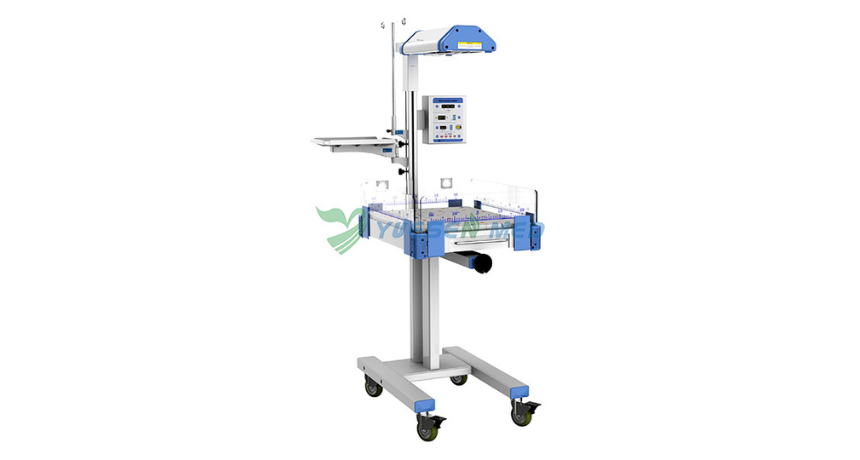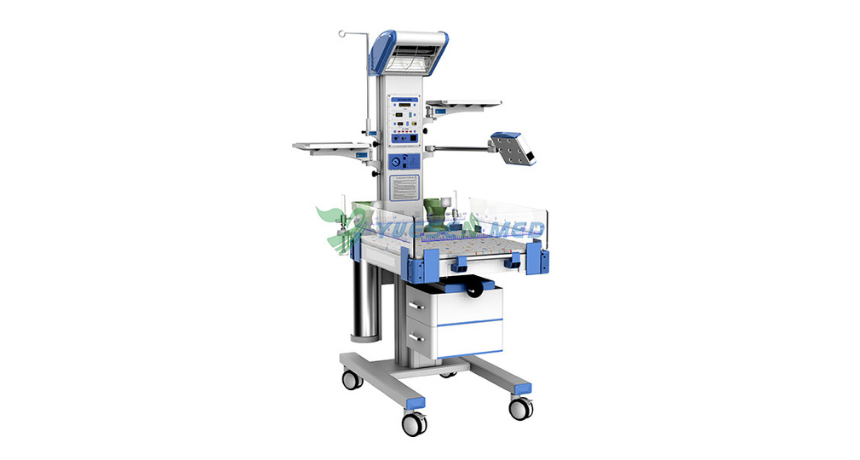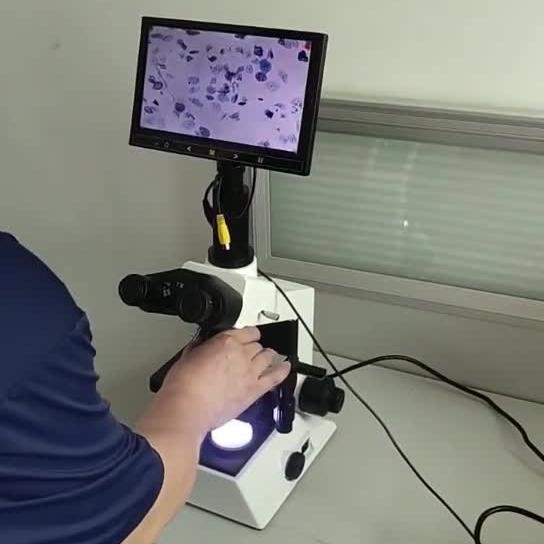Hot Products
YSX500D 50kW DR system set up and put into service in Cambodia.
YSENMED YSX500D 50kW digital x-ray system has been successfully set up and put into service in a hospital in Cambodia.
YSX056-PE serving as a vehicle-mounted x-ray in the Philippines
YSX056-PE 5.6kW portable x-ray unit has been adapted to fit on a truck, to provide mobile x-ray examination service for remote communities in the Philippines.
X Ray Machine To Zimbabwe
x ray machine, 50KW x ray machine
Microscope To Malawi
Achromatic objectives: 4X、10X、40X(S), 100X(S、Oil) Wide field eyepiece: WF10X(WF16X for option) Eyepiece head: Sliding binocular head inclined at 45° Stage: Double layer mechanical stage size 140X140mm, moving range 75X45mm Focusing: Coaxial coarse and
From Manual Testing to Automation: Why Fully Automatic Protein Analyzers Are Game-Changers
Views : 1146
Update time : 2024-10-24 17:11:00
In the world of laboratory testing, the shift from manual methods to automation is nothing short of revolutionary. When it comes to protein analysis, this transition is particularly significant. Imagine a world where tedious manual testing is replaced by fully automatic protein analyzers—sounds like something out of a sci-fi movie, right? But it's happening now, and it's changing the game for researchers and clinicians alike. Let's dive into why these technological marvels are so important.

Understanding Protein Analysis
Before we get into the nitty-gritty of automation, let's talk about what protein analysis actually involves. Proteins are the building blocks of life, playing crucial roles in everything from cell structure to immune response. Analyzing proteins helps scientists understand diseases, develop new drugs, and even improve food quality.
The Traditional Approach: Manual Testing
For years, protein analysis was a painstakingly manual process. Scientists would spend hours, if not days, conducting tests using various methods like electrophoresis or chromatography. While these methods are effective, they come with a host of challenges, including:
- Time Consumption: Manual testing can take a long time, delaying results and slowing down research.
- Human Error: Mistakes can happen, especially when dealing with complex procedures.
- Labor-Intensive: It requires a lot of hands-on work, which can be exhausting and inefficient.
So, what's the alternative?
Enter Automation: The Rise of Fully Automatic Protein Analyzers
Fully automatic protein analyzers are here to save the day. These machines can perform complex protein analyses with minimal human intervention. But what exactly makes them so special?
The Benefits of Automation
1. Speed: One of the most notable advantages of automatic analyzers is their speed. They can process samples in a fraction of the time it takes for manual tests. Imagine getting results in hours instead of days!
2. Accuracy: Automated systems reduce the risk of human error. With precise calibration and standardized procedures, the results are more reliable.
3. Efficiency: These machines can handle multiple samples simultaneously, freeing up researchers to focus on other important tasks.
4. Cost-Effectiveness: While the initial investment might be high, the long-term savings in labor and time can be significant.
5. Consistency: Automation ensures that every test is performed under the same conditions, leading to consistent results.
How Do Fully Automatic Protein Analyzers Work?
You might be wondering how these magical machines actually operate. Here's a simplified breakdown:
- Sample Preparation: The machine automatically prepares samples, reducing the chances of contamination or errors.
- Analysis: Using advanced techniques such as mass spectrometry or ELISA (Enzyme-Linked Immunosorbent Assay), the analyzer processes the samples.
- Data Interpretation: The results are interpreted and displayed in a user-friendly format, making it easy for researchers to understand.
The Impact on Research and Clinical Settings
So, how does this shift to automation impact real-world applications?
Accelerating Drug Development
In the pharmaceutical industry, time is money. Fully automatic protein analyzers can significantly speed up the drug discovery process. By quickly analyzing protein interactions and functions, researchers can identify potential drug targets faster than ever before.
Enhancing Diagnostic Accuracy
In clinical settings, accurate protein analysis is crucial for diagnosing diseases. Automated systems can provide quicker and more reliable results, helping doctors make informed decisions about patient care.
Improving Food Safety
In the food industry, protein analysis is essential for ensuring quality and safety. Fully automatic analyzers can quickly test for allergens or contaminants, ensuring that food products are safe for consumption.
The Future of Protein Analysis
As technology continues to evolve, the future of protein analysis looks bright. Here are a few trends to keep an eye on:
Integration with Artificial Intelligence
Imagine combining the power of fully automatic protein analyzers with artificial intelligence. This could lead to even more sophisticated data analysis, allowing researchers to uncover insights that were previously hidden.
Miniaturization of Technology
As technology advances, we may see smaller, more portable versions of these analyzers. This could make protein analysis accessible in remote locations or point-of-care settings.
Increased Customization
Future analyzers may offer more customizable options, allowing researchers to tailor tests to their specific needs. This could lead to more relevant and targeted results.
Challenges and Considerations
While the benefits of fully automatic protein analyzers are clear, there are also challenges to consider:
Initial Investment
The cost of purchasing and maintaining these machines can be high. For smaller labs, this might be a significant barrier to entry.
Training Needs
Transitioning from manual to automated systems requires training. Staff need to be familiar with the technology to ensure optimal use.
Dependence on Technology
As with any automation, there's a risk of becoming too reliant on technology. It's essential to maintain a balance between human oversight and machine efficiency.
Conclusion: Embracing the Future
The transition from manual testing to fully automatic protein analyzers is not just a trend; it's a game-changer. With benefits like speed, accuracy, and efficiency, these machines are transforming the landscape of protein analysis across various fields.
As we embrace this technology, it's crucial to stay informed about its advancements and challenges. The future is bright for protein analysis, and those who adapt will undoubtedly lead the way in scientific discovery and innovation. So, are you ready to embrace the future of protein analysis? The revolution is here, and it's time to get on board!
FAQ
What are fully automatic protein analyzers?
Fully automatic protein analyzers are advanced laboratory devices designed to perform protein analysis with minimal human intervention. They utilize various techniques, such as mass spectrometry and ELISA, to prepare samples, conduct tests, and interpret results quickly and accurately. These machines streamline the testing process, significantly reducing the time and effort required compared to manual methods.
How do automatic protein analyzers improve accuracy in testing?
Automatic protein analyzers enhance accuracy by minimizing human error through standardized procedures and precise calibration. Unlike manual testing, where variations can occur due to differences in technique or handling, these machines ensure that every test is performed under consistent conditions, leading to more reliable and reproducible results.
What industries benefit from using fully automatic protein analyzers?
Several industries benefit from fully automatic protein analyzers, including pharmaceuticals, clinical diagnostics, and food safety. In pharmaceuticals, they accelerate drug development by quickly analyzing protein interactions. In clinical settings, they provide timely and accurate diagnostic results. In the food industry, they ensure product safety by testing for allergens and contaminants.

Understanding Protein Analysis
Before we get into the nitty-gritty of automation, let's talk about what protein analysis actually involves. Proteins are the building blocks of life, playing crucial roles in everything from cell structure to immune response. Analyzing proteins helps scientists understand diseases, develop new drugs, and even improve food quality.
The Traditional Approach: Manual Testing
For years, protein analysis was a painstakingly manual process. Scientists would spend hours, if not days, conducting tests using various methods like electrophoresis or chromatography. While these methods are effective, they come with a host of challenges, including:
- Time Consumption: Manual testing can take a long time, delaying results and slowing down research.
- Human Error: Mistakes can happen, especially when dealing with complex procedures.
- Labor-Intensive: It requires a lot of hands-on work, which can be exhausting and inefficient.
So, what's the alternative?
Enter Automation: The Rise of Fully Automatic Protein Analyzers
Fully automatic protein analyzers are here to save the day. These machines can perform complex protein analyses with minimal human intervention. But what exactly makes them so special?
The Benefits of Automation
1. Speed: One of the most notable advantages of automatic analyzers is their speed. They can process samples in a fraction of the time it takes for manual tests. Imagine getting results in hours instead of days!
2. Accuracy: Automated systems reduce the risk of human error. With precise calibration and standardized procedures, the results are more reliable.
3. Efficiency: These machines can handle multiple samples simultaneously, freeing up researchers to focus on other important tasks.
4. Cost-Effectiveness: While the initial investment might be high, the long-term savings in labor and time can be significant.
5. Consistency: Automation ensures that every test is performed under the same conditions, leading to consistent results.
How Do Fully Automatic Protein Analyzers Work?
You might be wondering how these magical machines actually operate. Here's a simplified breakdown:
- Sample Preparation: The machine automatically prepares samples, reducing the chances of contamination or errors.
- Analysis: Using advanced techniques such as mass spectrometry or ELISA (Enzyme-Linked Immunosorbent Assay), the analyzer processes the samples.
- Data Interpretation: The results are interpreted and displayed in a user-friendly format, making it easy for researchers to understand.
The Impact on Research and Clinical Settings
So, how does this shift to automation impact real-world applications?
Accelerating Drug Development
In the pharmaceutical industry, time is money. Fully automatic protein analyzers can significantly speed up the drug discovery process. By quickly analyzing protein interactions and functions, researchers can identify potential drug targets faster than ever before.
Enhancing Diagnostic Accuracy
In clinical settings, accurate protein analysis is crucial for diagnosing diseases. Automated systems can provide quicker and more reliable results, helping doctors make informed decisions about patient care.
Improving Food Safety
In the food industry, protein analysis is essential for ensuring quality and safety. Fully automatic analyzers can quickly test for allergens or contaminants, ensuring that food products are safe for consumption.
The Future of Protein Analysis
As technology continues to evolve, the future of protein analysis looks bright. Here are a few trends to keep an eye on:
Integration with Artificial Intelligence
Imagine combining the power of fully automatic protein analyzers with artificial intelligence. This could lead to even more sophisticated data analysis, allowing researchers to uncover insights that were previously hidden.
Miniaturization of Technology
As technology advances, we may see smaller, more portable versions of these analyzers. This could make protein analysis accessible in remote locations or point-of-care settings.
Increased Customization
Future analyzers may offer more customizable options, allowing researchers to tailor tests to their specific needs. This could lead to more relevant and targeted results.
Challenges and Considerations
While the benefits of fully automatic protein analyzers are clear, there are also challenges to consider:
Initial Investment
The cost of purchasing and maintaining these machines can be high. For smaller labs, this might be a significant barrier to entry.
Training Needs
Transitioning from manual to automated systems requires training. Staff need to be familiar with the technology to ensure optimal use.
Dependence on Technology
As with any automation, there's a risk of becoming too reliant on technology. It's essential to maintain a balance between human oversight and machine efficiency.
Conclusion: Embracing the Future
The transition from manual testing to fully automatic protein analyzers is not just a trend; it's a game-changer. With benefits like speed, accuracy, and efficiency, these machines are transforming the landscape of protein analysis across various fields.
As we embrace this technology, it's crucial to stay informed about its advancements and challenges. The future is bright for protein analysis, and those who adapt will undoubtedly lead the way in scientific discovery and innovation. So, are you ready to embrace the future of protein analysis? The revolution is here, and it's time to get on board!
FAQ
What are fully automatic protein analyzers?
Fully automatic protein analyzers are advanced laboratory devices designed to perform protein analysis with minimal human intervention. They utilize various techniques, such as mass spectrometry and ELISA, to prepare samples, conduct tests, and interpret results quickly and accurately. These machines streamline the testing process, significantly reducing the time and effort required compared to manual methods.
How do automatic protein analyzers improve accuracy in testing?
Automatic protein analyzers enhance accuracy by minimizing human error through standardized procedures and precise calibration. Unlike manual testing, where variations can occur due to differences in technique or handling, these machines ensure that every test is performed under consistent conditions, leading to more reliable and reproducible results.
What industries benefit from using fully automatic protein analyzers?
Several industries benefit from fully automatic protein analyzers, including pharmaceuticals, clinical diagnostics, and food safety. In pharmaceuticals, they accelerate drug development by quickly analyzing protein interactions. In clinical settings, they provide timely and accurate diagnostic results. In the food industry, they ensure product safety by testing for allergens and contaminants.
Related News
Read More >>
 Is an Infant Radiant Warmer Good for Babies' Health?
Is an Infant Radiant Warmer Good for Babies' Health?
Apr .13.2025
What exactly is the infant radiant warmer, and how does it contribute to a baby's health? Let's dive into this topic and explore the ins and outs of infant radiant warmers.
 What is an Infant Radiant Warmer?
What is an Infant Radiant Warmer?
Apr .12.2025
One of the unsung heroes in neonatal care is the infant radiant warmer. But what exactly is it? Let's dive into the world of infant care and explore the ins and outs of this vital device.
 Introduction video of YSENMED YSXWJ-BX301B Digital Biological Microscope.
Introduction video of YSENMED YSXWJ-BX301B Digital Biological Microscope.
Apr .01.2025
Here we share the introduction video of YSENMED YSXWJ-BX301B Digital Biological Microscope.
 YSDR-VET320 veterinary DR & YSB-DU10V color ultrasound serving well in Kiram Veterinary Surgery in Uganda
YSDR-VET320 veterinary DR & YSB-DU10V color ultrasound serving well in Kiram Veterinary Surgery in Uganda
Mar .31.2025
Kiram Veterinary Surgery in Uganda shares the clear images they have got from YSDR-VET320 veterinary digital x-ray system and YSB-DU10V vet color ultrasound machine.



